Published 28 November 2020 ● Last Updated on 28 November 2020
The statistics surrounding glacial melting are alarming and serve as a clarion call (that have been sounding for some time now) for humans to shake off their slumber and take some urgent actions. Here are some numbers to chew on:
- Glaciers have lost more than 9000 billion tons of ice between 1961 and 2016, causing global sea levels to increase by 27 millimetres in the period.
- Melting Greenland ice is one of the biggest contributors to global sea level rise losing approximately 280 billion tons of ice each year
I could go on. But you get the drift right?
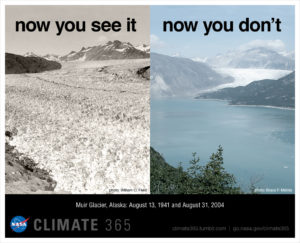
Before we continue, let’s clear out a few key concepts.
What are Glaciers?
Glaciers form when fallen snow remains in one location and gets compressed into large, thickened ice masses. What makes them unique is their ability to flow. Think of them as remnants of the Ice age (the period in history not the movie!). Glaciers can be broadly classified into Valley Glaciers (mountain glaciers) like that of the Himalayas and the Alps, and Continental Glaciers (ice sheets) like that of Antarctica and Greenland. Sea ice is formed just like glaciers, however it remains and melts in the oceans. Sea ice is comparable to ice cubes in a glass of water, so that when it melts, it does not impact the level of water. However diminishing sea ice has severe consequence for animal life (walrus, polar bears) as well as weather patterns. 95% of the oldest and thickest sea ice in the Arctic is already gone.
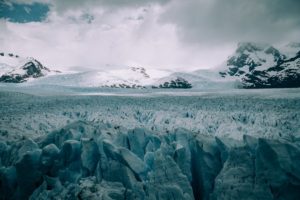
Why are they important?
So why are we so worried about some snow that has been lying around for a few years (or more like thousands of years). See for yourself:
- Glaciers store about 69% of the world’s freshwater.
- Glacial ice acts like a protective cover over the Earth and our oceans. The expanse of white covering reflects excess heat and keeps the planet cooler. Now you know another reason why the Arctic is colder than the equator!
- Made of ice hundreds to thousand years old, glaciers around the world are a valuable record of climate change over time. They are a key indicator of how rapidly the planet has been warming over the years.
Still don’t think that melting glaciers are a cause of concern?
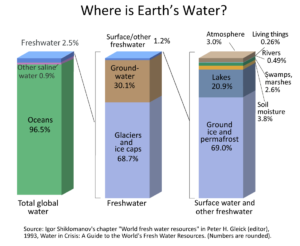
So, what’s happening here? From Arctic Glaciers to Peru, to the famed snows of Kilimanjaro, to the Himalayan glaciers in India, why are glaciers and sea ice melting? Watch this NASA animation to witness the process of glaciers melting.
There are 3 key reasons why the ice cover everywhere on earth changing so dramatically.
1. Things are getting hot in here (and they are about to get hotter)
From the North Pole to the South Pole, the planet is warming up. From 1880 to 2019, the global temperature has increased by 0.99 degrees centigrade! Meantime, due to the process of “Arctic amplification”, “the Arctic is likely to have warmed by more than twice as much as the global mean in 2020 compared to pre-industrial levels”, surmises UN Environment in a recent press release. The impacts of rising temperatures aren’t going to be felt in some far flung future. They are being felt now- in the melting of the glaciers and in thinning and shrinking of sea ice. As we move into the future, we seem to be setting successive records on high temperatures and extreme weather.
2. Blame it on GreenHouse Gases (GHGs)
Human actions emit a lot of sh** ! But the worst we have emitted so far are different GHGs like carbon dioxide, methane and nitrous oxide. A by-product of growing industrialization, climbing combustion of fossil fuels and rampant deforestation, current levels of GHGs in our atmosphere are higher than at any point over the past 8,00,000 years and their ability to trap heat is impacting our climate in various ways, glacial melt being only one of the disastrous outcomes.
3. The dual impact of warm ocean water
While global warming is melting ice shelves from above, this article cites a research stating that glaciers may be melting 10 to 100 times faster beneath the ocean’s surface. With oceans absorbing 90% of the earth’s warmth, warmer waters are seeping beneath the ice shelves and lapping against the bases of glaciers, melting the ice from bottom up. Talk about being stuck between a rock and a hard place! In regions like West Antarctica, warm ocean waters have been attributed with helping in ice loss and glacial melt. With warmer water, there will be changes in where and when fish spawn- as a result, industries that need vibrant fisheries will be affected.
Still wondering what the hue and cry is about? After all, what happens if glaciers melt?
There are five reasons we need to rally together to combat this phenomenon
1. The deluge
A study (one of the largest ever) shows a 50% increase in volume of glacial lakes since 1990 due to glacial melting and climate change. With glacial water being a storehouse of freshwater you must be wondering why is this a cause of concern?
Because, unlike normal lakes, glacial lakes consist of loose rocks and debris making them unstable and prone to causing glacial lakes outburst floods. Coastal communities will be directly impacted as a result. Furthermore, glaciers world over contain enough ice to raise sea levels by nearly half a meter. This disproportionate surge in sea levels and the resulting flooding poses a serious threat to inhabitants of islands and coastal areas.
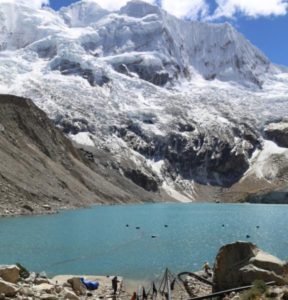
2. Homeless and hungry wildlife
Glaciers are the natural habitat of a number of animals. Unchecked glacial melting can spells extinction of many such species dependent upon glaciers for their continued existence. Polar bears for instance need sea ice and to hunt seals for their survival. Earlier spring ice melt and later fall freeze-up in the Arctic region is causing bears to go without hunting and food for elongated periods of time, forcing them to fast and live off the fat from the seals caught in spring- an imminent threat to their survival. In fact, studies show that if allowed to continue unabated, global warming and resulting glacial melt could cause the population of polar bears to drop two-thirds.
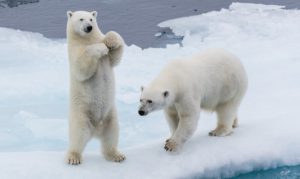
3. Disappearing coral reefs
Already suffering serious degradation under the onslaught of ocean warming led by climate change, coral reefs are getting overwhelmed by the rising sea levels triggered by melting ice sheets and glaciers. Coral reefs need sunlight for the process of photosynthesis, enabling their survival. When water levels increase due to glacier melting, sufficient sunlight will not be able to reach the corals, weakening their quality. Study of growth rates of more than 200 tropical western Atlantic and Indian Ocean reefs shows that only 9% of these reefs have the ability to keep up with the rise in sea-level.
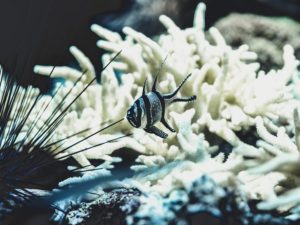
4. Water Water Everywhere…..no more
The disappearance of glaciers also means a serious scarcity of fresh water in the coming years, less water available for irrigation and a lower hydroelectric energy generation capacity.
5. Extreme weather patterns
Growing body of research shows that melting ice sheets and glaciers have a more complicated influence on the climate system than just causing a rise in sea levels. New findings suggest that as icy fresh water melts into the ocean, it may substantially affect the flow of the ocean currents. The influence of ocean current on global weather patterns may worsen extreme weather conditions around the world.
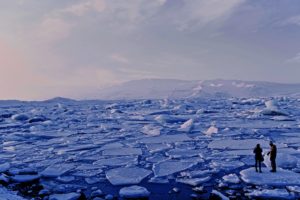
Such serious ramifications are enough to send anyone scurrying to do their best and do some damage control.
What can you do to help?
Despite 197 countries committing under the Paris agreement to restricting global warming to 2˚C by the end of this century, even minor increases in temperature could have far-reaching impacts on glacial melt. While countries like Norway are considering some positive steps to extend the environmental protection of the Arctic, what is it that we as individuals can do to reduce the heat trapping gases in our atmosphere? With few simple changes to our daily habits and routines we can significantly reduce emission. Here is a list of the 10 most impactful steps that individuals can take to lower their GHG emissions footprint and in the process prevent the ‘over heating’ of the planet and hence contain the “melting of glaciers”.
To wrap up, necessity (read desperation) is mother of all invention
There are clear challenges ahead, and it may not surprise you that tech has gone all out with ideas to terraform our own planet. While they may sound audacious now, there are some innovations that offer a glimmer of hope if proven to be viable:
- Research published in Cryosphere Journal offers building walls on the seafloor to prevent glaciers from melting and sea levels rising as a solution.
- Cooling the glaciers from underneath by drilling a series of tunnels in the bedrock and pumping cold brine through the is another targeted geoengineering scheme.
- A team of Indonesian designers have won accolades for their radical idea to repopulate the Arctic with ice.
Related Articles:
Project Drawdown| Top 10 steps you can take to reduce global warming
Looking to offset your carbon footprint? │ A handy guide to choose the right carbon offset project



0 Comments